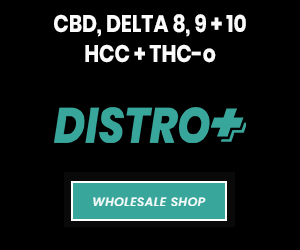Biden Continues Ban on D.C. Adult-Use Cannabis Sales in Budget Proposal
Marijuana Industry News March 29, 2022 MJ Shareholders
The market for hemp-derived delta-8 THC products has exploded over the past year. And while the legality of this cannabinoid (or lack thereof) continues to be a point of significant controversy, another issue creating waves recently is the reporting of several studies showing numerous delta-8 products on the market contain surprising and illegal levels of delta-9 THC.
A little background concerning the legal landscape of delta-8 is helpful. Passage of the Agriculture Improvement Act of 2018 (the 2018 Farm Bill), which legalized hemp at the federal level, opened the door for a variety of new consumer products to hit the market.
The 2018 Farm Bill defines “hemp” as “the plant species Cannabis sativa L. and any part of that plant, including the seeds thereof and all derivatives, extracts, cannabinoids, isomers, acids, salts, and salts of isomers, whether growing or not, with a delta-9 tetrahydrocannabinol concentration of not more than 0.3 percent on a dry weight basis.”
The definition of hemp in the 2018 Farm Bill was clearly intended to prohibit the development of hemp products that were intoxicating. In the final rule issued by USDA to implement the farm bill, USDA notes that delta-9 levels in hemp were regulated because delta-9 “is the primary intoxicating component of cannabis.”
Despite the farm bill’s attempt to precisely define what constitutes a “legal” hemp product, the plain language of the statute created ambiguities that appear to have undermined the purpose of the bill in the hands of the hemp marketplace.
For instance, commentators have noted that the farm bill’s use of a dry-weight basis limit of 0.3% delta-9 THC in hemp and hemp-derived products leads to puzzling results. For example, applying the 0.3% dry-weight standard on an edible gummy product could lead to a gummy that contains 10 mg of delta-9, but yet still remains under the 0.3% dry-weight threshold.
RELATED: Delta-9 in Edible Hemp Products: What’s a ‘Dry Weight Basis’ Anyway?
There is significant debate about delta-8’s legality under the 2018 Farm Bill. Those advancing this chemical as legal under the measure argue that the farm bill’s description of a legal delta-9 concentration by weight intentionally excludes delta-8. Others in the hemp industry, as well as federal and many state authorities, have argued that the farm bill unequivocally meant to exclude all THC isomers from legalization.

© Courtesy of Lennon
Mislabeling Debacle
Regardless of the ultimate outcome of the delta-8 legality debate, analysis of allegedly hemp-derived delta-8 products has raised concerns about either intentional or accidental misbranding of numerous products.
For instance, in April 2021, U.S. Cannabis Council, a cannabis trade organization, analyzed 16 delta-8 vaping products for levels of contaminants, including delta-9. The analysis was shocking—not only did 25% of the products test positive for heavy metal contaminants, but also 15 of the 16 products contained illegal levels of delta-9.
Additional studies of delta-8 products have produced consistently similar results to the U.S. Cannabis Council study.
RELATED: Understanding Delta-8-THC: Where Does It Come From?
In late 2021, the trade journal Leafreport published an analysis of 38 delta-8 products, finding numerous inaccuracies with the products’ descriptions.
The sampling covered a wide variety of delta-8 products, including vapes, tinctures, and gummies. Of the products sampled, 68% contained a significantly different concentration of delta-8 than reported on the label.
Even more concerning, however, was that 53% of the products analyzed had more than 0.3% delta-9 THC, making them federally illegal. One of the products, a delta-8 vape, contained a whopping 15.2% of delta-9.
Another analytical study of 51 delta-8 products—conducted in October 2021 by CBD Oracle—showed similarly troubling results. This study also included a sampling of a variety of product lines, including flower, edibles, prerolls, tinctures, and vaping products, from various states.
In this study, an even more sizeable majority (76%) of the products contained illegal delta-9 levels, including a disposable vape pen, which contained 23.17% of delta-9. Overall, the average for all products sampled was 6.6% delta-9.
Interestingly, this study also observed that illegal delta-9 products were more likely to be sold through brick-and-mortar stores, like gas stations and smoke shops, than online outlets. Moreover, the length of time that a retailer had been operating was correlated with the likelihood of selling a misbranded product, with companies operating for more than two years tending to be more compliant than more recently opened outlets.
Other trends in the studies are worthy of further analysis.
Data in the Leafreport study, for instance, suggests there may be a product manufacturing issue that affects certain classes of delta-8 products. In that study, edible products such as gummies that exceeded the delta-9 threshold tended to still contain less than 5% delta-9. In contrast, vaping products consistently contained the highest concentrations of delta-9 (10-15%).
Similarly, in the CBD Oracle study, vaping products consistently contained higher delta-9 levels compared to flower, tinctures, and edibles. On the other hand, all 16 products in the U.S. Cannabis Council study were vaping products with illegal but lower concentrations of delta-9, from approximately 1.5-5%.
Taken as a whole, these various studies suggest that delta-9 contamination in products marketed as delta-8 is a widespread problem. However, the question remains: Why does this contamination exist?
A Deeper Dive
Commentators have posited several potential explanations regarding why so many apparently misbranded delta-8 products exist.
Delta-8 extraction problems form the first potential source of contamination. Delta-8 production from hemp requires solvent extraction, conversion of CBD to delta-8 with a reagent, and then distillation and purification. A significant amount of delta-9 is made during this process as well, and failing to adequately distill the final product can potentially lead to unintentionally high delta-9 levels.
Another explanation shifts the focus away from faulty production processes and focuses on faulty laboratory analysis instead.
Because delta-9 and delta-8 are so similar, they can be very difficult to separate analytically in labs, either internally at a processor or externally when obtaining a certificate of analysis (COA) before marketing the product.
This is partially due to a lack of a standard for solvent selection and technique during analysis, which can spike the detected amount of delta-9 in a sample, thus skewing results upward, according to the CBD Oracle report.
On the opposite side, it is also possible for a less-specialized analytical chemist to mistakenly report delta-9 detected in a sample as delta-8 due to the similarity of their respective signals in a chemical separation test. This results in underreported amounts of delta-9.
Yet another potential explanation is due to delta-8 chemical degradation after the products have been packaged for sale. Delta-8 is not a stable isomer of delta-9 and can in fact degrade into delta-9 over time under certain conditions, according to CBD Oracle.
Finally, most concerning is documented evidence of what appears to be intentional misbranding by some delta-8 processors. The CBD Oracle study found through interviews and other investigation that a significant minority (10%) of COAs for the products were falsified or altered.
Similar apparently intentional falsification of COAs was documented by Molly Longman in a Refinery29 article, where multiple labs confirmed that COAs for products purportedly analyzed by those labs were actually altered, older COAs.
Together, these multiple studies of contaminated “delta-8” products should be cause for concern for the hemp industry.
Regardless of delta-8’s legal status, it is undisputed that some products being sold as delta-8 are actually contaminated with illegal levels of delta-9. These products are clearly misbranded, and as such, present significant potential legal exposure to hemp processors and retailers under state and federal consumer protection laws.
Moreover, in the case of intentional misbranding, these studies suggest that potential criminal exposure may also exist. For any processor looking to enter or remain in the delta-8 market, these studies show that it is best to tread very carefully when creating and marketing these products.
Nathan A. Lennon is a Cincinnati-area trial attorney and partner at Reminger Co., LPA. His practice is focused in the areas of complex products liability, environmental/toxic torts, and government/public entity liability.
MJ Shareholders
MJShareholders.com is the largest dedicated financial network and leading corporate communications firm serving the legal cannabis industry. Our network aims to connect public marijuana companies with these focused cannabis audiences across the US and Canada that are critical for growth: Short and long term cannabis investors Active funding sources Mainstream media Business leaders Cannabis consumers










